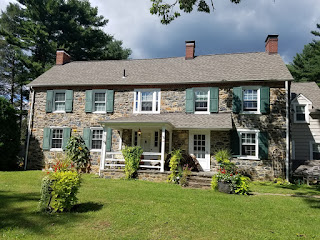 |
| The Banks Family |
involved in its first few hundred years of history. That being said, I always find it interesting when a particular family keeps popping up over and over again. And with a fantastic "new" picture shared with me recently, the family in question this time are the Bankses. Members of the Banks family have shown up in several past posts, including ones regarding the Jabez Banks Invitations, additional Banks Family items, and Automotive Pioneer Richard R. Banks. Another Banks brother, John W. Banks, also made appearances in a post about a barn fire and the one about the bunco steerers.
Of course, there were upwards of about a dozen Banks siblings milling about New Castle County in the late 19th Century, so it would kind of be surprising if we hadn't heard from them before. To the best of my knowledge, though, the only family members we had photographs of were Jabez Banks, Jr., his wife Sarah, and their three daughters Jessie, Bessie, and Annie. The good news is that now we a great photo that certainly contains more of the Banks family. The bad news is that we don't yet know exactly who is who in the shot. I'm fairly certain that Jabez is the guy behind the yellow dot. I also think his wife Sarah Chambers Banks is in the black dress in the back left. (You can click on the picture to see a larger version.)
Now maybe it's just me, but I happen to think that poring over old photos like this one is pretty fun. I've done very similar things recently with pictures of my own family, from roughly the same time period. I'd say this photo was taken somewhere around 1900, give or take a few years. I'd also say that the Banks men had a very distinctive look. I think I can smell the mustache oil. (Full disclosure: I have no idea what mustache oil smells like.) Down below is a picture of Jabez and one of him and family, for reference. In the group shot, I count at least seven or so guys that all look very similar. I'd be very surprised if some of those men aren't his brothers Richard, John, Edwin, Henry, Charles, and William.




